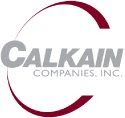
Cap rates are an important economic indicator for the net lease market as they effectively reveal supply and demand of NNN investment property and the return investors expect for their NNN investments. Furthermore, when compared with Treasury Bills, NNN investment property and the Net leases behind them offer an interesting picture of the ebb and flow of credit and risk and a window into the behavior of lenders and investors alike.
If we think of Net Leases as a bond like asset backed by real estate and the credit strength of the tenant, we see that cap rates and T-bills move in opposite directions in response to the rise and fall of interest rates. The returns offered by T-Bills rise when interest rates fall. For NNN properties, a fall in interest rates has an opposite effect driving cap rates lower as the drop in the cost of debt makes a lower return tolerable to NNN investors. Said another way, T-bill rates typically rise during periods of business expansion and fall during recessions. The economic engine that drives up the return for T-bills typically drives down the return offered by Net lease investments. This effect is compounded as the competition amongst investors pursuing Net lease properties drives cap rates down even further.
So where are we today? It is still too early to tell but preliminary data for 2010 suggests that the steady rise in cap rates that began in 2008/2009 may be leveling off. Lack of quality product, low interest rates and a very modest thaw of the frozen debt market may be responsible. Warren Buffet and others have pointed out that it is a fool’s game to try and time the market but the day of bargains in Net lease investments may be coming to an end.





No comments:
Post a Comment